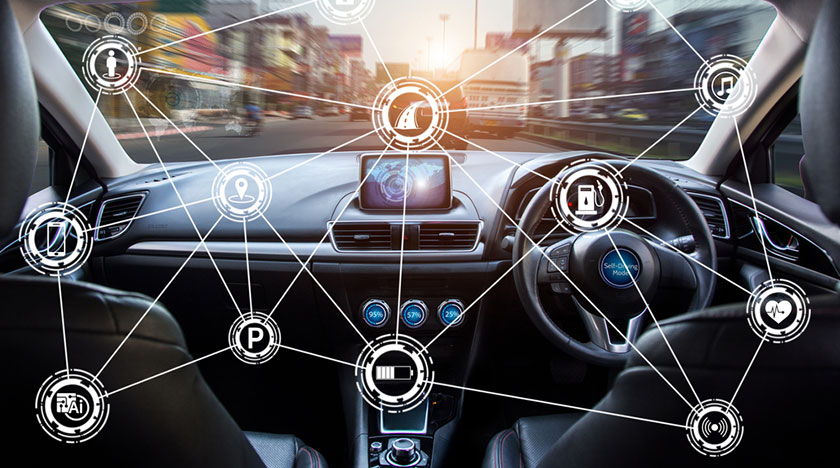If you are responsible for your company’s fleet, vehicle safety must be your prime concern. Unfortunately, safety on the roads is largely dependent on the driver. If the driver is not alert and careful, he is more likely to be involved in a crash.
However, with advances in technology, cars of the future might make the roads safer for everyone.
In this article, we will discuss the features and technologies that would make future vehicles extremely safe and user-friendly. But first, here is a brief introduction to the evolution of vehicle safety.
The History of Car Safety
When cars first started being commonly used, car safety was deplorable. Features like safety glass only started being used in the 1930s, because the glass shrapnel was causing more damage than the actual crash.
The First Wave of Car Safety Features
Safety glass was part of the first wave of car safety, which was extremely passive. It did not help prevent crashes but tried to mitigate the damage after the fact. First wave car safety features included the aforementioned windshield glass, along with padded dashboards, seatbelts (which evolved from 2-point to 3-point), crumple zones, collapsible steering, and hazard lights.
The Second Wave of Car Safety Features
The second wave, which was more active, came along when technology became low-cost and computers and sensors became more automotive-friendly. So, airbags could be deployed because of accelerometers-on-a-chip, Anti-Lock Braking Systems (ABS) was possible because of the real-time analysis of wheel sensors, etc.
The Third Wave of Car Safety Features
These active safety features then evolved into the 2nd generation, which was the third wave. These rely on vehicle monitoring systems that run in the background and ‘keep an eye out’ for any potential dangers to the vehicle, whether through driver behaviour or from the environment.
The features include electronic stability control, blind-spot detection, forward collision warning, lane departure warning, rearview video systems, and others.
The Fourth Wave of Car Safety Features
The next way of car safety features is going to be autonomous cars. These are cars that require little to no human intervention and can drive themselves, managing dangers and hazards using artificial intelligence (AI).
Levels of Automation
Autonomous cars have six levels of automation, starting from level 0, which is no automation at all, to level 6, which is completely automated.
Level 0 of automation includes the original cars that did not assist at all. They were completely controlled by the driver.
Cars at level 1 of automation assist in the form of information but have no control of the vehicle.
We are currently looking at level 2 to level 3 of automation. These are vehicles that will drive themselves but will need monitoring by the driver.
Level 2 vehicles will transfer control of the car to the driver with very little warning. This means drivers cannot ‘switch off’ as they might be required to react in just a few seconds in case of any danger.
Level 3 vehicles, on the other hand, will give more of a notice, but drivers are still expected to take over from the AI when the need arises.
What we are working towards is level 4 or 5, where the vehicle would be able to take preventive action if the human does not respond in time, or which does not need a human driver at all.
Safety in the Cars of the Future
As cars become autonomous, they will take out the human error out of the equation. Self-driving technology is still being refined, but with sensors and AI, cars will be able to make decisions faster and more efficiently than humans.
We can already see technologies like autonomous braking systems, adaptive cruise control, lane assist, and more helping drivers reduce risk and drive safer.
Other safety features that future cars would come with include:
- Blindspot detection, to detect hazards that would be hidden in the driver’s blind spot
- Rear cross-traffic assist, to make reversing safer
- Reverse park assist, where the car would parallel-park itself at the press of a button
- Electronic stability control, to prevent skidding and the loss of control when the car does skid
- Biometric access, where the car will require the driver’s fingerprint instead of keys to unlock
- Health monitoring, so drivers suffering from low blood sugar, blood pressure, and other health issues will be monitored by their car while they are driving. This system could also assess the alcohol levels in the blood, and not allow the driver to drive if they are too high.
As cars become more and more equipped to make split-second decisions on their own, we can expect the roads to become safer for everyone. We can also expect human error, and possibly even drunk driving, to be taken out of the equation. As a result, roads could be safe not just for the drivers but also everyone around!
Further reading
Safety on the roads is becoming more and more sophisticated. Here are some other resources that could be useful for you.
- New smart technology that could call emergency services in seconds
- What to do if you break down on a motorway
- Nine steps to reducing your fuel costs
If you want to rent vehicles with the latest safety technology, contact us by calling 01844 852000 or send us an email. We will be happy to discuss your options and book you in for a test drive of the vehicle of your choice.


